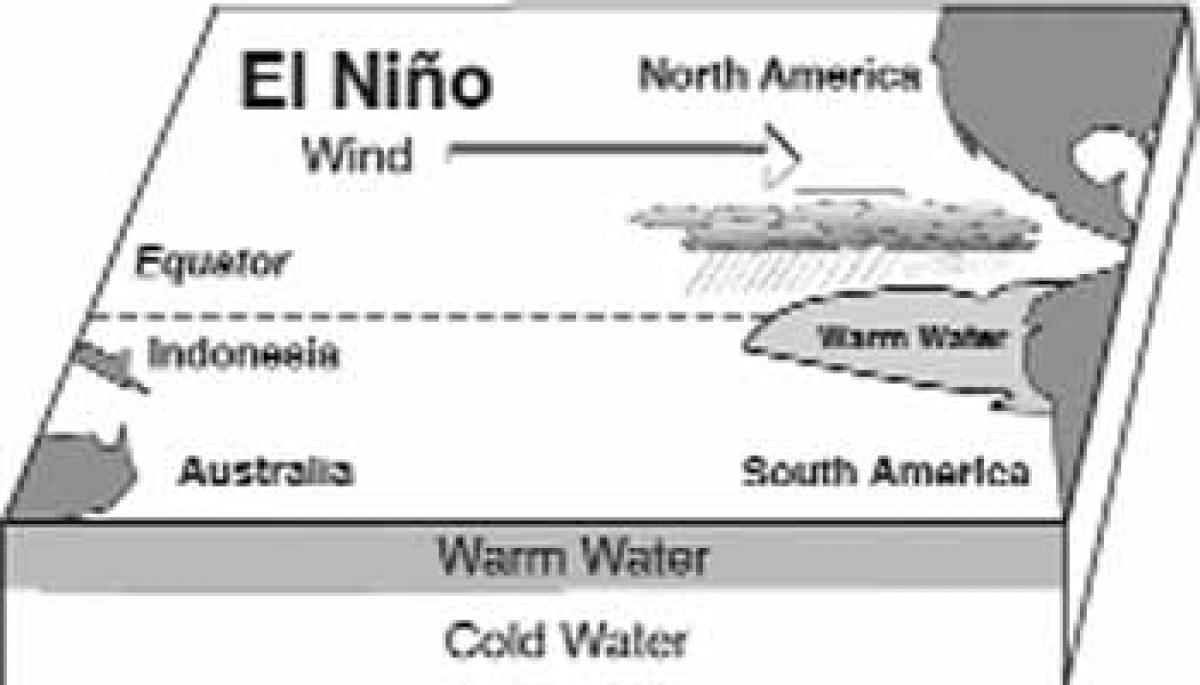Live
- Capital Gains taxes hiked
- New tax regime made attractive
- Naidu, Pawan, Lokesh thank Nirmala
- Budget empowers neo-middle class: PM Modi
- Please all(ies) Budget
- MyVoice: Views of our readers 24th July 2024
- TB: Gene editing could add new power to 100-year-old vaccine
- A review of Union of Budget 2024 towards “Energy Sector”: Are we moving towards Green Energy?
- Power-obsessed YSRCP chief lacking sense of responsibility
- Nirmala Sitharaman gave a ‘Chombu’ to the state
Just In

The US space agency Nasa has warned that the effects of the current El Nino weather phenomenon could be as bad as those of 1998, the strongest on record. This year\'s El Nino has been linked to the worst floods seen in 50 years in Paraguay, Argentina, Uruguay and Brazil.
The US space agency Nasa has warned that the effects of the current El Nino weather phenomenon could be as bad as those of 1998, the strongest on record. This year's El Nino has been linked to the worst floods seen in 50 years in Paraguay, Argentina, Uruguay and Brazil. Then, the floods forced more than 1,50,000 people from their homes - more than 100,000 of them in the Paraguayan capital alone.
El Nino means The Little Boy, or Christ Child in Spanish. El Niño was originally recognized by fishermen off the coast of South America in the 1600s, with the appearance of unusually warm water in the Pacific Ocean. The name was chosen based on the time of year (around December) during which these warm waters events tended to occur.
The term El Niño refers to the large-scale ocean-atmosphere climate interaction linked to a periodic warming in sea surface temperatures across the central and east-central Equatorial Pacific. Typical El Niño effects are likely to develop over North America during the upcoming winter season. Those include warmer-than-average temperatures over western and central Canada, and over the western and northern United States. Wetter-than-average conditions are likely over portions of the U.S.
Gulf Coast and Florida, while drier-than-average conditions can be expected in the Ohio Valley and the Pacific Northwest. The presence of El Niño can significantly influence weather patterns, ocean conditions, and marine fisheries across large portions of the globe for an extended period of time.
The Indian monsoon – which besides India, also affects other regions of south and southeast Asia and Australia – is the most monetarily important because of its serious influence on the economy of India and neighboring countries.
Apparently, the monsoon is directly linked to the El Nino Southern Oscillation (ENSO) phenomenon due to which, in summer months, temperatures over much of India may rise to as high as 45 degrees celcius while the Indian Ocean is much cooler. Consequently, the warm air over the land rises and cooler moisture-bearing air blows in from the sea, bringing heavy rains to the region.
The ENSO cycle is a term that describes the fluctuations in temperature between the ocean and the atmosphere in the east-central Equatorial Pacific - covering an area of roughly 60 degrees of longitude, approximately between 180 and 120 degrees West. (Sources: www.quora.com and www.noaa.gov).

© 2024 Hyderabad Media House Limited/The Hans India. All rights reserved. Powered by hocalwire.com







